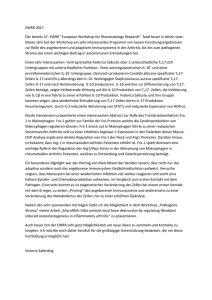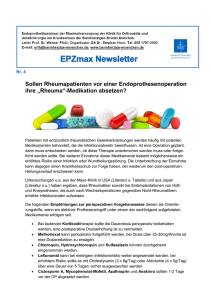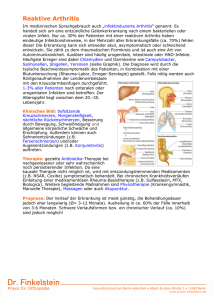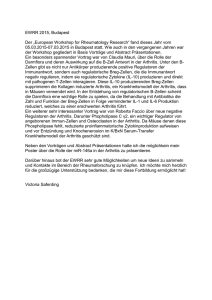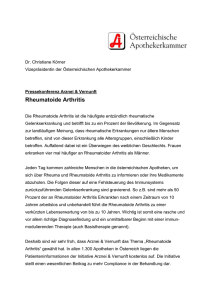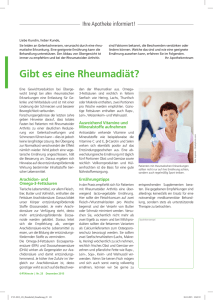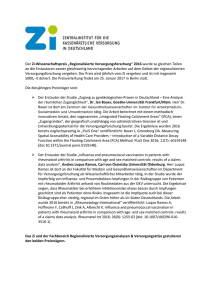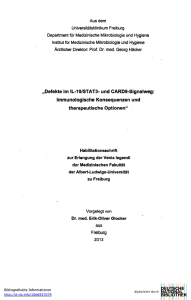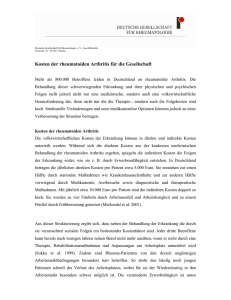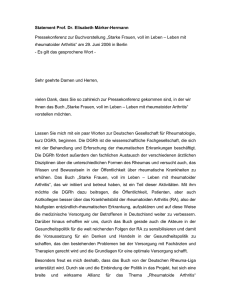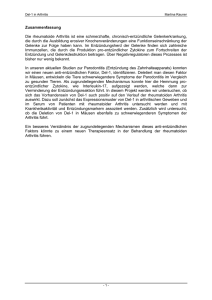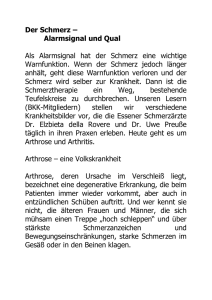Recombinant antibodies for the imaging and - ETH E
Werbung
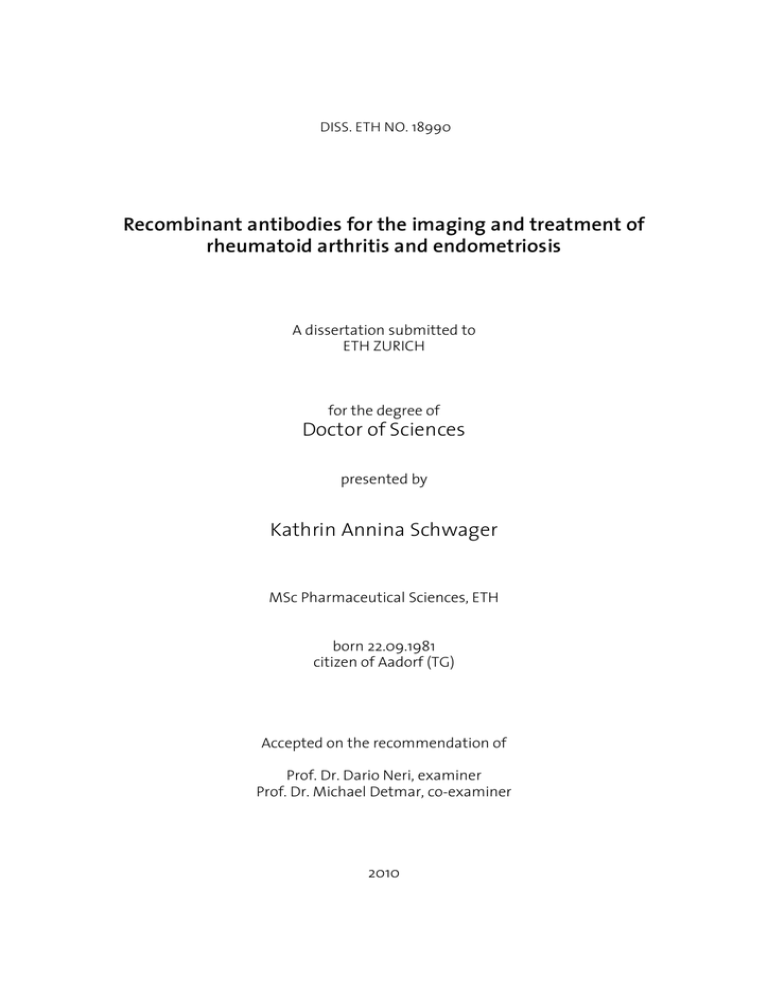
DISS. ETH NO. 18990 Recombinant antibodies for the imaging and treatment of rheumatoid arthritis and endometriosis A dissertation submitted to ETH ZURICH for the degree of Doctor of Sciences presented by Kathrin Annina Schwager MSc Pharmaceutical Sciences, ETH born 22.09.1981 citizen of Aadorf (TG) Accepted on the recommendation of Prof. Dr. Dario Neri, examiner Prof. Dr. Michael Detmar, co-examiner 2010 1. Summary One of the most promising avenues towards the development of better drugs consists in the antibody-mediated delivery of therapeutic agents (e.g. cytokines, drugs or radionuclides) to the site of the disease, while sparing normal tissue. Targeting the neovasculature of tumors or inflammation seems to be a particularly promising avenue, considering the fact that the formation of new blood vessels is a crucial step for disease progression. Furthermore, antigens in the modified neovasculature of diseases are ideal for antibody-based pharmacodelivery applications, in view of their abundance, stability and specificity. In this thesis we show that spliced isoforms of fibronectin and tenascin C, markers of angiogenesis, are expressed in synovial tissue of rheumatoid arthritis specimens and in endometriosis lesions of patients. The antibody F8, specific to the EDA domain of fibronectin, showed the strongest staining in comparative immunohistochemistry performed on tissue samples of various inflammatory diseases and was thus selected for the development of a fully human fusion protein with IL-10. IL-10 is a particularly attractive anti-inflammatory cytokine for treatment of chronic inflammation, which has exhibited an excellent tolerability profile in rodents, monkeys, and patients, and which has been investigated in clinical trials for the treatment of patients with inflammatory diseases (e.g. rheumatoid arthritis). The clinical development of IL-10 was discontinued because of insufficient efficacy of the compound in humans. However, in a placebo controlled phase I/II study for the treatment of rheumatoid arthritis ACR20 responses were 63% for the IL-10 groups, compared to 10% for placebo. Similar results were observed with TNF blockers. The fusion protein F8-IL10 was produced and purified to homogeneity in CHO cells and shown to comprise biological active antibody and cytokine moieties by binding assays on recombinant antigen and by MC/9 cell proliferation assays. Following radioiodination, F8-IL10 was able to selectively target arthritic lesions and tumor neovascular structures in mice, as evidenced by autoradiographic analysis and quantitative biodistribution studies. The subcutaneous administration route led to equivalent targeting results when compared with intravenous administration and was thus 6 selected for the clinical development of the product. F8-IL10 potently inhibited progression of established arthritis in the collagen-induced mouse model when tested alone and in combination with methotrexate. In preparation for clinical trials in patients with rheumatoid arthritis, F8-IL10 was studied in rodents and in cynomolgus monkeys, revealing an excellent safety profile at doses tenfold higher than the planned starting dose for clinical phase I trials. In a second part of this thesis the targeting potential of F8 was studied in a mouse model of endometriosis. A selective uptake of fluorescently labeled F8 in endometriosis lesions was demonstrated using near infrared imaging. 7 Zusammenfassung Einer der vielversprechendsten Wege in der Entwicklung von besseren und selektiveren Medikamenten besteht darin, Therapeutika (z.B. Zytokine, Chemotherapeutika oder Radionuklide) mit Hilfe von Antikörpern zielgerichtet an den Ort der Erkrankung zu bringen, wodurch gesundes Gewebe geschont wird. Die Neubildung von Blutgefässen ist ein wichtiger Prozess im Fortschreiten von verschiedenen Erkrankungen, wie zum Beispiel Krebs oder entzündlichen Erkrankungen. Antigene, die selektiv auf und um neuen Blutgefässen herum vorkommen, sind besonders attraktive Ziele für Antikörperbasierte Therapeutika aufgrund ihres häufigen Vorkommens, ihrer Stabilität und ihrer Spezifität. Wir konnten zeigen, dass gespleisste Isoformen von Fibronektin und Tenascin C, sowohl im Synovium von Patienten mit Rheumatoider Arthritis, als auch in Endometriosegewebe vorkommen. Der Antikörper F8, der spezifisch an die alternativ gespleisste EDA Domäne von Fibronektin bindet, zeigte in diesen Geweben die stärkste Färbung und wurde daher ausgewählt um ein humanes Fusionsprotein mit Interleukin10 (IL-10) zu entwickeln. IL-10 ist ein sehr vielversprechendes anti-inflammatorisches Zytokin, das bereits in verschiedenen klinischen Studien für die Behandlung von entzündlichen Erkrankungen getestet wurde. Es zeigte im Allgemeinen eine sehr gute Verträglichkeit in Studien mit Nagetieren, Primaten und im Menschen. Die klinische Entwicklung von IL-10 wurde jedoch aufgrund einer eher mässigen Wirksamkeit gestoppt. Allerdings wurde in einer Plazebo kontrollierten Phase I/II Studie an Patienten mit Rheumatoider Arthritis in 63% eine Reduktion der Symptome um 20% festgestellt. Diese Resulate sind vergleichbar mit denen von TNF Blockern. Das Fusionsprotein F8-IL10 wurde in CHO Zellen produziert. Um zu überprüfen, ob sowohl Antikörper als auch Zytokine ihre biologische Aktivität beibehielten, wurden Zellproliferations- und Bindungsversuche durchgeführt. Anhand von Biodistributionsexperimenten und Autoradiographie konnte gezeigt werden, dass sich radioaktiv markiertes F8-IL10 nach intravenöser Injektion selektiv sowohl in entzündeten Gelenken als auch in Tumoren von Mäusen anreichert. Eine subkutane Verabreichung des Fusionsproteins führte zu einem vergleichbaren Targeting und 8 wurde deshalb für die klinische Entwicklung ausgewählt. In einem ArthritisMausmodell resultierte die subkutane Verabreichung von F8-IL10 zu einer deutlichen Verlangsamung des Fortschreiten der Krankheit. In Kombination mit Methotrexat konnten die Therapieergebnisse sogar noch weiter verbessert werden. Als Vorbereitung auf klinische Studien an Patienten mit Rheumatoider Arthritis wurden Toxikologiestudien an Primaten und Mäusen durchgeführt. Hierbei zeigte sich F8-IL10 ein sehr gutes Toxizitätsprofil, auch bei bis zu 10-fach höherer Dosis als die geplante Startdosis in den klinischen Studien. Im zweiten Teil dieser Dissertation wurde das Targeting-Potential von F8 in einem Endometriose-Mausmodell getestet. Mittels Nahinfrarot-Bildgebung konnte gezeigt werden, dass sich der Antikörper F8 selektiv im Endometriosegewebe anreichert. anreichert. 9
